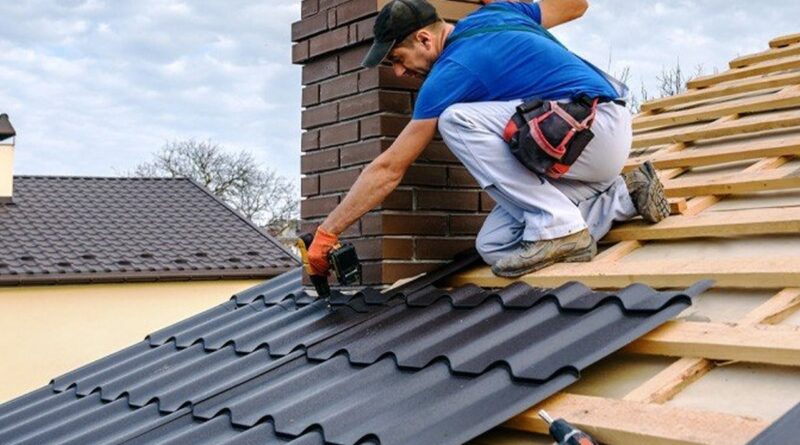Roof Repair and Replacement: Understanding Your Options
The roof is one of the most critical components of any building, providing protection from the elements and ensuring the structural integrity of your home. Over time, however, even the most well-maintained roofs will show signs of wear. Whether due to age, weather, or other factors, you may face the decision of whether to repair or replace your roof. Understanding the factors involved in both options can help you make the best decision for your home. Both roof repair and replacement have their benefits, and the right choice depends on the condition of your roof, your budget, and your long-term goals for your home. Repairs are ideal for minor issues, but if your roof is old or has extensive damage, a replacement may provide better value and long-term protection.
Roof Repairs: Fixing What’s Broken
Roof repairs are generally recommended when the damage is isolated or minor. Repairing a roof can extend its lifespan and save you money in the short term. Here are some common situations where roof repairs are a good solution:
1. Leaks and Water Damage
Small leaks are one of the most common roof issues. Whether caused by missing shingles, cracked flashing, or small punctures, these leaks can be repaired without replacing the entire roof. Repairing water damage early can prevent further issues like mold growth, rotting wood, or damage to the interior of your home.
2. Damaged or Missing Shingles
Shingles are designed to withstand the elements, but they can become damaged or dislodged during storms or with age. Replacing missing or cracked shingles is a straightforward repair that can restore the roof’s integrity and prevent future damage. It’s important to match new shingles with the existing ones in terms of material, color, and quality.
3. Flashing Issues
Flashing is the material installed around chimneys, vents, skylights, and other roof penetrations to prevent water from entering the home. Over time, flashing can corrode, crack, or become loose. Repairing or replacing damaged flashing can be a quick and effective solution for preventing leaks.
4. Moss, Algae, and Debris
Moss and algae growth on your roof may not seem like a major issue at first, but over time, they can trap moisture, leading to deterioration of roofing materials. Cleaning your roof and removing moss, algae, and debris can help prolong its life. Installing zinc or copper strips can prevent regrowth.
Roof Replacement: A Long-Term Investment
While repairs can resolve specific problems, a roof replacement may be necessary if your roof is severely damaged or nearing the end of its lifespan. A new roof offers better protection, improved energy efficiency, and can enhance your home’s curb appeal. Here are some key indicators that it may be time for a replacement:
1. Age of the Roof
Roofs don’t last forever. The lifespan of a roof depends on the material. Asphalt shingles typically last 20 to 25 years, while metal and tile roofs can last much longer. If your roof is nearing or has surpassed its expected lifespan, it might be time to consider a replacement rather than continuing with repairs.
2. Widespread Damage
If your roof has extensive damage, such as multiple leaks or significant structural issues like sagging, a full roof replacement is likely the best option. Large sections of missing or damaged shingles, visible daylight through the roof boards, or water damage throughout the attic are clear signs that repairs may not be sufficient.
3. Energy Efficiency and Insulation
Older roofs can be inefficient in terms of energy use. If you notice your energy bills increasing, it could be due to poor roof insulation or ventilation. Replacing your roof with modern, energy-efficient materials can lower your heating and cooling costs and create a more comfortable living environment.
4. Granule Loss
Asphalt shingles are coated with granules that protect them from UV rays and weathering. If you find a significant amount of granules in your gutters or on the ground, it’s a sign that your shingles are deteriorating. Once the granules are gone, the shingles can no longer provide adequate protection, and a replacement may be necessary.
Choosing the Right Roofing Material
If you decide on a roof replacement, selecting the right roofing material is crucial for both functionality and aesthetics. Common options include:
- Asphalt Shingles: The most popular choice due to their affordability and ease of installation. They offer a lifespan of around 20 to 25 years.
- Metal Roofing: Known for durability and energy efficiency, metal roofs can last 40 to 70 years and are resistant to extreme weather conditions.
- Tile Roofing: Clay and concrete tiles are incredibly durable and can last over 50 years, but they are heavier and may require additional structural support.
- Slate Roofing: An extremely durable and visually appealing option, slate roofs can last 100 years or more. However, they are expensive and require professional installation.
Benefits of Regular Roof Maintenance
Whether you opt for repair or replacement, regular maintenance is key to extending the life of your roof. Routine inspections, cleaning, and prompt repairs can prevent small issues from turning into costly problems. It’s important to clear gutters regularly, check for damaged or missing shingles, and ensure that flashing and seals are in good condition.
Hiring a professional roofing service can help ensure that maintenance is done correctly and that any issues are caught early.
Conclusion
For expert roof and gutter maintenance, Perth Gutters Cleaning is here to help. Our team offers professional services to ensure your roof stays in top condition, providing peace of mind and protection for years to come.
Read More Blogs At: Techy Businesses

